Garden Pepper, Cayenne Pepper, Red Pepper, Red Cluster Pepper, Bell Pepper, Cherry Pepper, Poblano Pepper, Chile Pequin, Jalapeno, Turkey Pepper
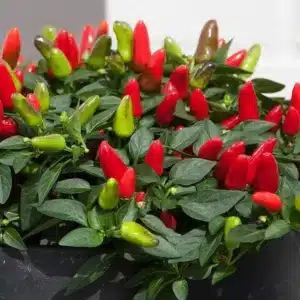
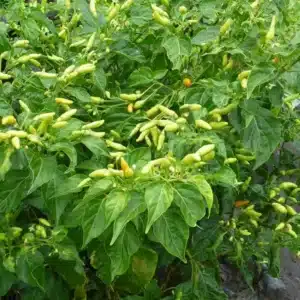
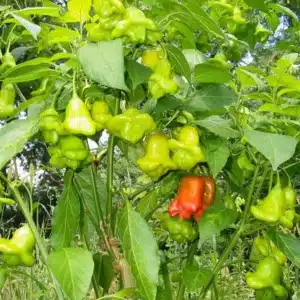
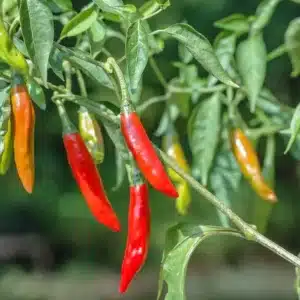
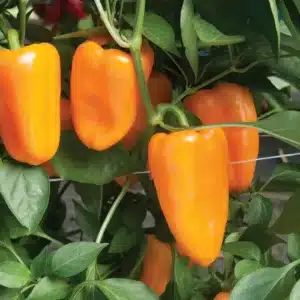
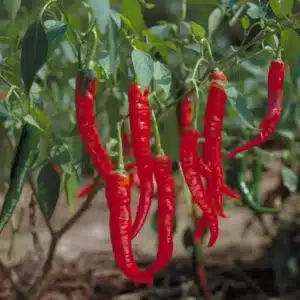

Pepper plants grow happily in moist, fertile soil with excellent drainage and require at least 6 hours of full sun daily. In extreme heat, the plant may benefit from some afternoon shade in order to prevent sunburn on the fruit. Peppers do not do well when evening temperatures dip below 55 degrees Fahrenheit, and will refuse to grow in shade. Plants should be spaced 18-34 inches apart to avoid over-crowding. Peppers are most frequently propagated from seed planted in early spring after the last frost, but may also be grown from stem cuttings dipped into rooting hormone powder and then placed into a glass of water or moist growing medium until roots form.
Peppers require moist, well-drained soil and full sun (at least 6 hours daily.) The plants should be watered at least once weekly, but in excessively-hot, dry periods, may require daily watering and a bit of afternoon shade. The soil should be allowed to dry between periods of irrigation. When the top leaves are regularly pinched, lateral branching is encouraged, thus giving the plant a fuller shape and eliminating the need for staking.
Peppers respond well to the addition of organic matter or compost to the soil at the time of planting. A soil test may be conducted before fertilizer is applied to determine any specific lack of nutrients provided by the soil. After a couple of weeks, a water-soluble 11-3-8 fertilizer may be applied, if necessary, to encourage foliage to grow, according to the directions on the product label. Once the plant is full and leafy, a second application of 2-3-1 water-soluble fertilizer may be applied to help encourage the formation of fruit, making sure to follow the product label directions.
Peppers maintain a more attractive shape when the top leaves are regularly pinched back, thus encouraging a compact, bushy form. Mature pepper fruits should be gently cut away from the plant, allowing their stem to remain attached to the fruit.
In overly-damp, cool conditions or water-logged soil, peppers may be affected by fungal leaf spot. This may be treated with an organic fungicide, following the product label directions. If the plant develops root rot, the affected roots must be lifted and removed from the plant, leaving only the white healthy roots to remain before re-planting. Peppers also may be attacked by aphids, spider mites or whiteflies, which can be treated with an application of insecticidal soap or neem oil, according to the product label directions.











